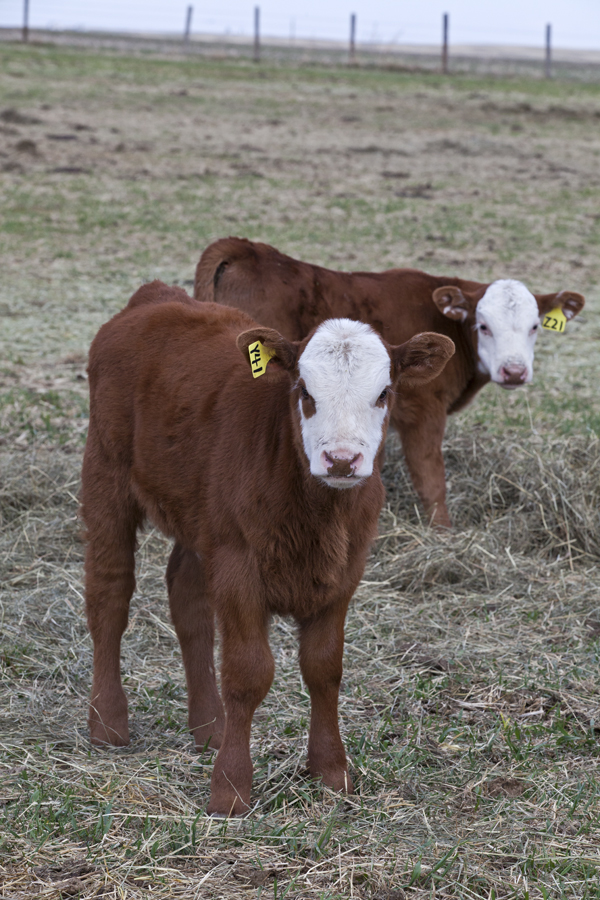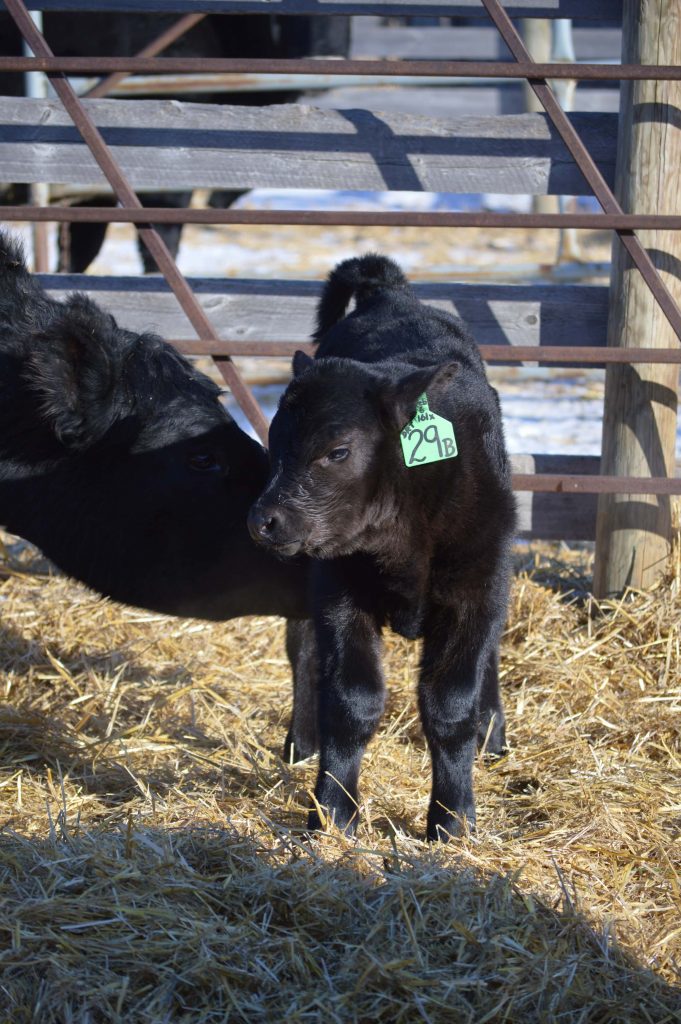Keeping Calves Healthy 🎙️

This article written by Dr. Reynold Bergen, BCRC Science Director, originally appeared in the February 2023 issue of Canadian Cattlemen magazine and is reprinted on BeefResearch.ca with permission of the publisher.
Remarque : cette page web n’est actuellement disponible qu’en anglais.
CLICK THE PLAY BUTTON TO LISTEN TO THIS ARTICLE:
Cow-calf margins get tighter each time you feed a pregnant cow through the winter, only to have her calf die before weaning. Three leading causes of preweaning death loss are diarrhea, navel ill and bovine respiratory disease (BRD). Not all calf illness and death can be prevented, especially when the weather gets bad, but remembering some basic principles can help avoid some of them.
Dr. John Campbell (Western College of Veterinary Medicine) led a team of researchers and producers from the 2013-18 Western Canadian Cow-Calf Surveillance Network to study how common calf diarrhea, navel ill and BRD are, how they are typically treated, and to learn which management practices can help avoid them (“Improving beef calf health: frequency of disease syndromes, uptake of management practices following calving, and potential for antimicrobial use reduction in western Canadian herds”; doi.org/10.1093/tas/txac151).
What They Did
Cow-calf operators from Alberta (48), Saskatchewan (24) and Manitoba (17) with 89 to 684 cows were surveyed in 2017 about their calving and herd management practices, when and how often calves were treated for BRD, navel ill and calfhood diarrhea, and how they were treated. The researchers then deciphered what practices were effective at avoiding calf health problems regardless of herd size or geography.
What They Learned
Bovine respiratory disease is not just a feedlot issue! On average, 4.9% of calves were treated for BRD before weaning. Most of these (3.9%) occurred before two months of age, and preweaning death loss averaged 0.5%. However, some herds treated up to 19% of calves before two months of age, up to 25% before weaning, and experienced up to 2.3% death loss. That’s higher than some groups of feedlot calves. These were not bottom-end operations by any stretch of the imagination. All the herds participating in this study had a working relationship with a veterinarian.
Calfhood diarrhea: The average herd treated nearly 3% of calves for diarrhea before weaning, nearly all before one month of age. Treatment rates were much higher in some herds (e.g., over 8% treated before a month of age). Death losses averaged 0.5% but reached 2% in some herds.
Navel ill: The average herd treated 2% of calves were treated for navel ill, though some herds treated up to 12% of calves.
learn more:
- Calving & Calf Management (BCRC webpage)
- Bovine Respiratory Disease (BCRC webpage)
- BRD Vaccination Cost-Benefit Calculator (BCRC calculator)

The keys to reducing the risks of these diseases were:
Social distancing: allowing cattle to spread out and calve on clean calving grounds makes it harder for diseases to spread among animals. Calving on pasture decreased the risk of both BRD and calf diarrhea compared to calving in barns or corrals. Similarly, the risk of all three diseases were lower in herds that moved newly calved pairs out of the main herd and to a clean nursery pasture (or vice-versa).
Don’t let germs build up: The risk of calfhood disease was lower in operations that did not calve on the winter feeding grounds. Calving heifers and cows separately also reduced the risks of all three diseases.
Don’t buy more germs (especially close to calving season!): The risk of BRD was lower in herds that did not bring newly purchased cows or calves into the herd during calving or before breeding.
Minimize stress: Stress depresses the immune system. The risks of disease (especially BRD and calf diarrhea) were lower in herds that handled cows and calves less frequently.
Strengthen immunity: The risk of calf diarrhea was lower in operations that practiced body condition scoring (BCS). Heifers and cows that are fed and managed for optimal BCS at calving will produce higher quality colostrum, which is essential to protecting calves against disease early in life. Vaccination is also critical. Most farms vaccinated calves for both bacteria and viruses that cause BRD, and most vaccinated the cow herd for viral pathogens. Only a third of farms also vaccinated the cow herd for the bacterial BRD pathogens, but those that did had a lower risk of BRD in calves.
So, What Does This Mean… to You?

How do your treatment rates compare to these? Which of these management practices are worth adopting or refining on your operation? None of these practices are silver bullets on their own – they work together and add up.
Work with your veterinarian to develop a prevention-based herd health plan tailored to your facilities, landbase, workforce and disease history. Review your vaccination program (calves and cows), and how you usually prevent and treat calfhood diseases when they arise. For example, calfhood diarrhea in the first month of age is usually caused by viruses, and electrolytes are usually the best treatment. Save the antibiotics for the calves that have a fever and have stopped nursing. Don’t mass-treat all calves with antibiotics to prevent BRD unless your veterinarian has recommended it.
Optimal nutrition ensures that cows and heifers are in good body condition score at calving, give birth to a healthy calf and produce high quality colostrum. This will also help cows rebreed sooner after calving. Allow newborn calves to get their fill of colostrum before tagging, vaccinating or castrating them.
You can’t prevent lousy weather during calving, but you can help give your calves a fighting chance.
The Beef Cattle Research Council is funded by the Canadian Beef Cattle Check-Off. The BCRC partners with Agriculture and Agri-Food Canada, provincial beef industry groups and governments to advance research and technology transfer supporting the Canadian beef industry’s vision to be recognized as a preferred supplier of healthy, high-quality beef, cattle, and genetics.
Click here to subscribe to the BCRC Blog and receive email notifications when new content is posted.
The sharing or reprinting of BCRC Blog articles is typically welcome and encouraged, however this article requires permission of the original publisher.
We welcome your questions, comments and suggestions. Contact us directly or generate public discussion by posting your thoughts below.